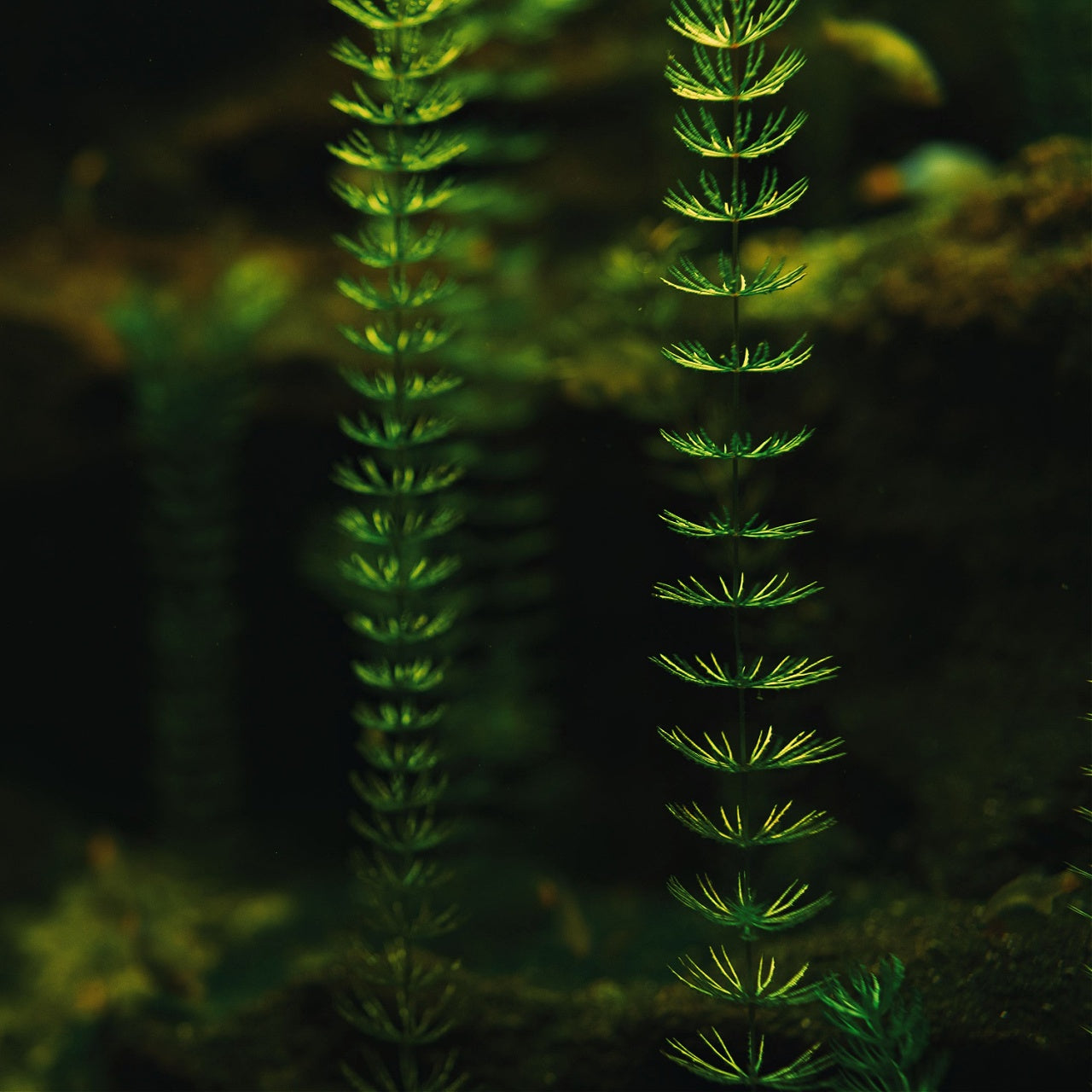


Removes & Absorbs Toxins
Improves Air Quality
Low maintenance & easy to grow
Buy Coontail Plants Online Wholesale
Coontail Plant, also known as the cock's tail, is a part of the family Araceae. The name comes from the finely divided leaves, resembling a rooster's tail feathers. It is native to South America and Central America but is commonly found in wet areas throughout North America and Europe. It can grow in shallow water up to three feet deep. In the wild, it grows in slow-moving streams and ditches with thick mud or clay bottoms.
Coontail Plant Creeps Across The Floor Of The Pond
The scientific name is Ceratophyllum demersum. It has a creeping rhizome that produces erect stems up to 8 inches tall. Its leaves are long and narrow, with pointed tips; they float on the water surface or flat on the bottom. The plant flowers have three white petals with brown veining, giving them a fan-like appearance. These flowers usually appear at the base of each stem, but occasionally, one or two may be found near the top.
It reproduces by seed and vegetatively by spreading rhizomes from one to another or one pond to another through mud or soil particles carried by birds or animals.
Other Common Names
Suppose you're new to gardening, and you hear others calling it:
- Hornwort
- Rigid hornwort
This Plant Grows In Shallow Water
It is a water perennial that grows in shallow water. It has flower spikes with clusters of tiny flowers and long, thin leaves. It is easy to grow and care for. It tolerates a wide range of light conditions but prefers full sun. It grows in any soil as long as it's kept moist, but it does best in rich soil with lots of organic matter.
To keep them healthy, provide plenty of fertilizer and clean water. In addition, please do not let the water stagnate or freeze during winter.
The Plants Lovely Appearance
They have large, dark green leaves that grow from a central stem. The leaves have spines along the edges and sometimes on their backs. The spines are usually dark brown or black, but they may be lighter shades of green depending on the type of perennial plant you have growing in your garden.
If you need an underwater plant, This Perennial is your best bet. It is an actual aquatic plant, classified as a submerged aquatic, and it's fast-growing. It often grows several feet long. It has a clever way of reproducing, producing both male and female flowers. This plant is completely free-floating, yet it is very effective at forming dense underwater colonies for fish habitat. The Coontail is a great natural filter for ponds.
This Is How Your Plants Will Look upon Delivery
Shipping date depends on the date displayed and chosen when you order from the product's page.
We do not offer warranties on products after 5 days past receiving your plants.
By signing up, you agree with our privacy policy.





